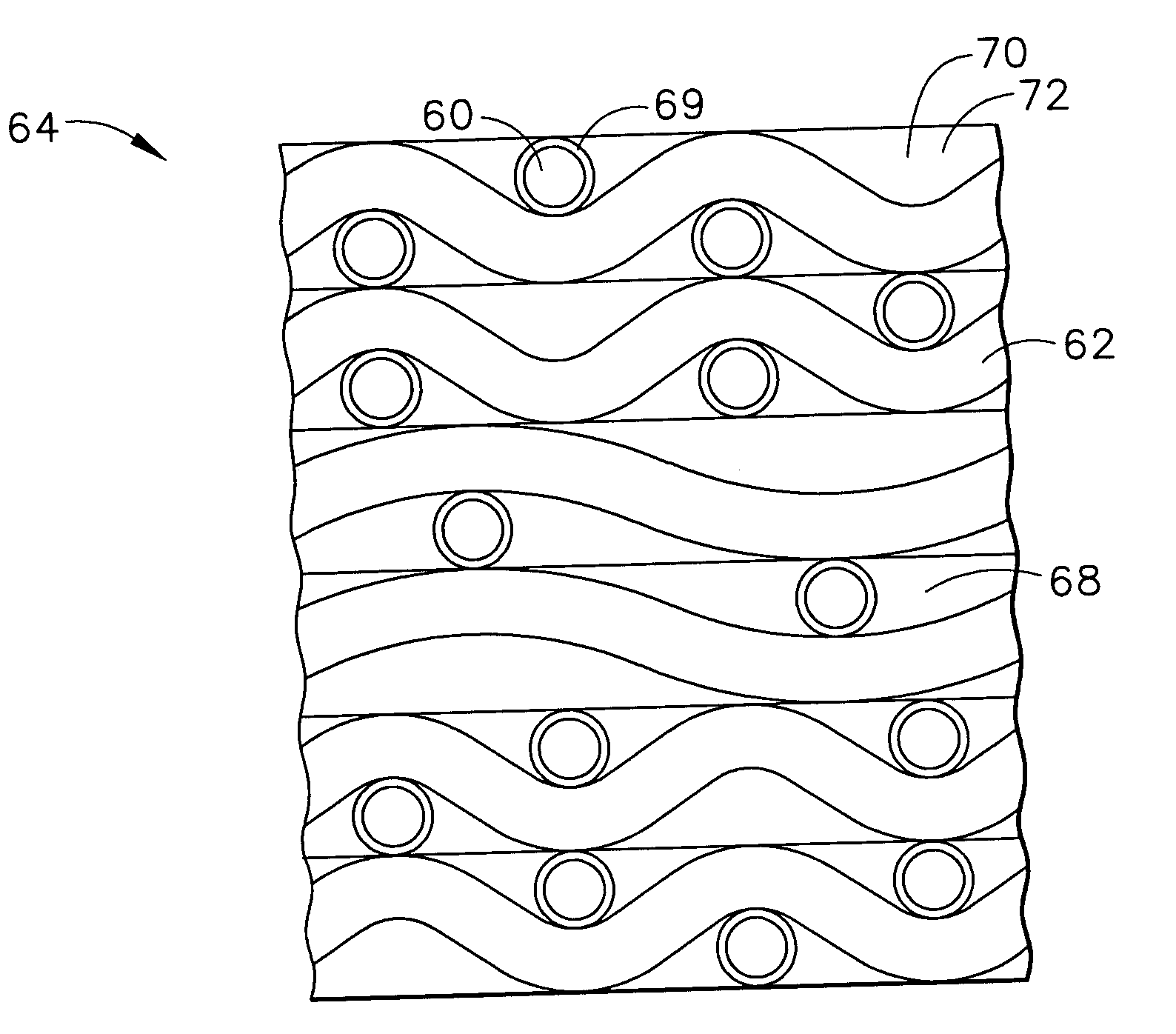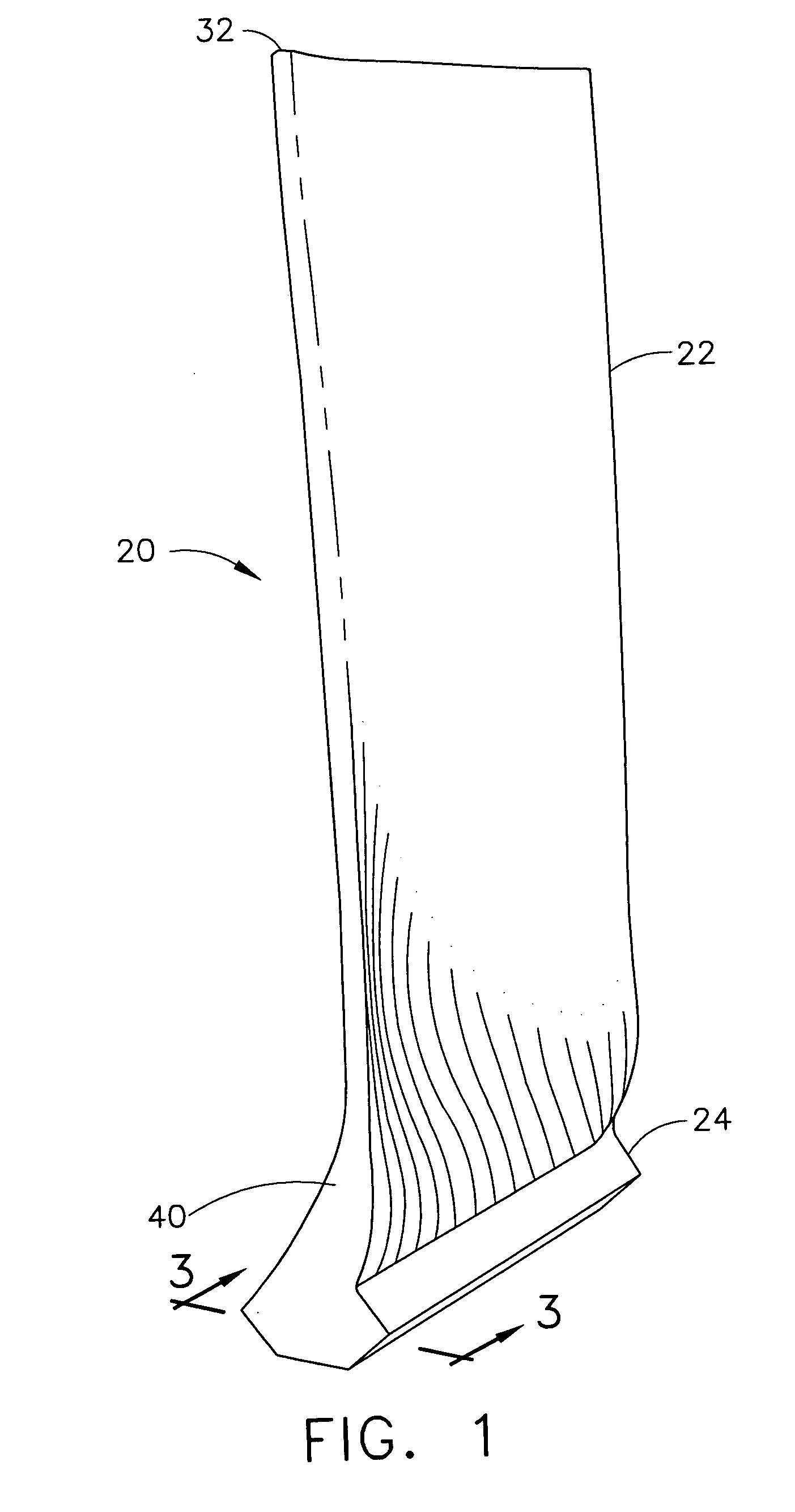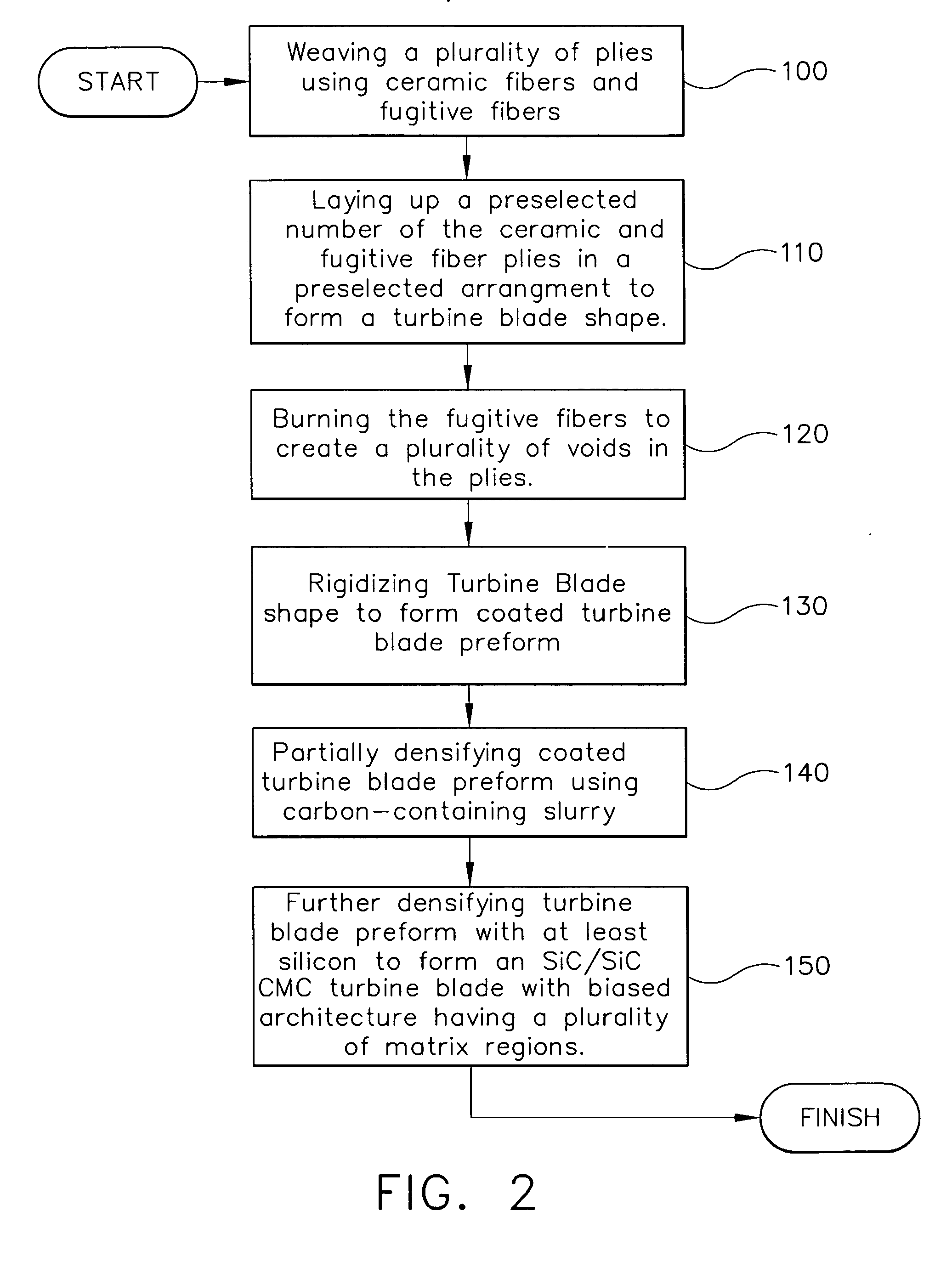Interlaminar tensile reinforcement of SiC/SiC CMC's using fugitive fibers
- Summary
- Abstract
- Description
- Claims
- Application Information
AI Technical Summary
Benefits of technology
Problems solved by technology
Method used
Image
Examples
Embodiment Construction
[0026]FIG. 1 depicts an exemplary aircraft engine LPT blade 20. In this illustration a turbine blade 20 comprises a ceramic matrix composite material. The turbine blade 20 includes an airfoil 22 against which the flow of hot exhaust gas is directed. The turbine blade 20 is mounted to a turbine disk (not shown) by a dovetail 24 that extends downwardly from the airfoil 22 and engages a slot of similar geometry on the turbine disk. The LPT blade 20 made according to methods of the present invention typically includes an integral platform (not shown) between the dovetail 24 and the airfoil. A separate platform which not an important aspect of the method of the present invention, is provided to minimize the exposure of the dovetail 24 to hot gases of combustion. The airfoil may be described as having a root end 40, and an oppositely disposed tip end 32.
[0027] Referring now to FIG. 2 there is shown a flow chart illustrating a slurry cast MI method of manufacture of the present invention ...
PUM
| Property | Measurement | Unit |
|---|---|---|
| Temperature | aaaaa | aaaaa |
| Temperature | aaaaa | aaaaa |
| Ratio | aaaaa | aaaaa |
Abstract
Description
Claims
Application Information
 Login to View More
Login to View More - R&D
- Intellectual Property
- Life Sciences
- Materials
- Tech Scout
- Unparalleled Data Quality
- Higher Quality Content
- 60% Fewer Hallucinations
Browse by: Latest US Patents, China's latest patents, Technical Efficacy Thesaurus, Application Domain, Technology Topic, Popular Technical Reports.
© 2025 PatSnap. All rights reserved.Legal|Privacy policy|Modern Slavery Act Transparency Statement|Sitemap|About US| Contact US: help@patsnap.com



